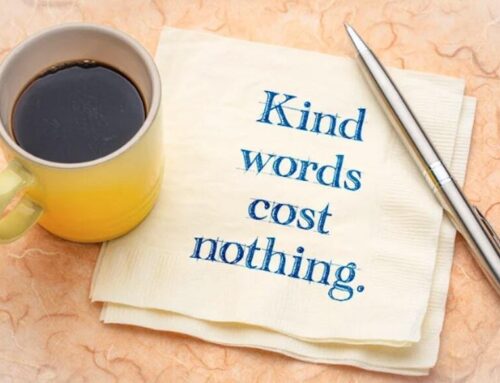
Conflict is an inherent and unavoidable aspect of both personal and professional interactions. The manner in which we manage these conflicts significantly impacts the health of those relationships and our collective achievements. This highlights the importance of effective conflict resolution.
The collaborative conflict resolution style is one of the most effective approaches to dealing with disagreements. This style emphasizes a win-win outcome for everyone involved. But what exactly does this mean, and how does it look in practice?
The collaborating conflict style champions cooperation. In this conflict style, all parties involved actively work together to find a solution that addresses everyone’s core concerns. This isn’t simply splitting the difference but digging deeper to uncover the underlying needs and interests of those in conflict. The goal is to reach a solution that satisfies everyone, strengthening relationships in the process.
It’s easy to mix up the collaborating style with the compromising style in conflict management. In the compromising style, each person gives up something to reach a middle ground. Collaboration, however, is about finding a creative solution that doesn’t require significant sacrifices for any of the parties.
The Importance of Collaborative Conflict Resolution in Today’s Complex World
Collaboration offers a powerful tool for navigating complex challenges. Here are five key reasons why this approach is essential:
1. Finding Sustainable, Win-Win Outcomes
The collaborative conflict style goes beyond quick fixes. It aims to uncover the root causes of a disagreement and develop a mutually acceptable solution that benefits all parties involved. This leads to more lasting resolutions, minimizing the likelihood of the same issues resurfacing.
2. Fostering Innovation and Creativity
When people feel heard and understood, they’re more willing to think outside the box. The collaborating style establishes a safe space for open communication, brainstorming, and exploration of unconventional solutions. This can unlock groundbreaking ideas that wouldn’t be possible under a confrontational conflict management style.
3. Building Stronger Relationships
Effective conflict resolution isn’t just about the immediate issue—it’s about nurturing relationships. The collaborating style emphasizes empathy and mutual respect. By working together to address challenges, the parties involved deepen their understanding of each other’s perspectives and build trust.
4. Promoting a More Harmonious Environment
The collaborating style has a positive ripple effect on the overall atmosphere. When individuals see collaborative approaches succeed, it fosters a culture of cooperation. This can lead to fewer instances of conflict, less reliance on adversarial strategies like the competing style, and a generally more supportive and productive environment.
5. Avoiding Escalation and Personal Attacks
Conflicts left unresolved can quickly descend into harmful territory. Instead of focusing on “winning,” collaboration emphasizes problem-solving. This reduces the tendency for defensiveness, blame, or personal attacks, often seen in the accommodating style or a combative conflict management style.
By choosing collaborating styles for conflict resolution over the accommodating style, we invest in productive problem-solving, innovation, stronger relationships, and a more positive, cooperative atmosphere.

How the Collaborating Conflict Resolution Style Manifests in the Workplace
The collaborating conflict style translates into tangible workplace practices. Here are five ways it comes to life, with examples to illustrate:
1. Prioritizing Open Dialogue
In a collaborative workplace, honest and respectful communication is the norm. Team members feel comfortable sharing their concerns, ideas, and opinions without fear of judgment. This open dialogue forms the foundation for addressing conflicts productively, leading to a better understanding of the challenges at hand.
Example: A team experiences tension over project deadlines. Instead of assigning blame, they hold a meeting where each member can voice their challenges and contribute to problem-solving.
2. Exploring Diverse Perspectives
Collaboration recognizes the value of different perspectives. It encourages active listening and consideration of all viewpoints. This approach often uncovers hidden insights and creates space for more comprehensive solutions.
Example: Two departments clash over resources. Instead of escalating the issue, a cross-departmental meeting is held to understand each team’s needs. This leads to the discovery of potential resource-sharing opportunities.
3. Emphasizing Shared Goals
The collaborating style shifts the focus from individual wins to collective success. It aligns the parties involved around a shared purpose and motivates them to find solutions that benefit the greater good.
Example: A marketing team member disagrees on campaign strategy. Instead of getting locked in internal competition, they revisit the campaign’s objectives, leading to a more cohesive and impactful approach.
4. Encourage Accountability and Shared Responsibility
A collaborative conflict management style empowers everyone involved to be part of the solution. This sense of shared responsibility naturally translates into greater accountability, as individuals are motivated to follow through on agreed-upon actions.
Example: A client expresses dissatisfaction with a delivered product. The team rallies together, avoiding finger-pointing, and works collaboratively to analyze feedback and create an improvement plan.
5. Proactive Problem-Solving vs. Reactivity
The collaborating style promotes moving away from the avoiding style or purely reactive conflict management approaches. It emphasizes seeking out and addressing potential issues early on, even before they escalate into major disputes.
Example: Instead of waiting for a performance issue to create conflict, a manager regularly meets with team members to proactively discuss bottlenecks and brainstorm alternative solutions to ensure a smooth workflow.
Adopting a collaborative conflict resolution approach can revolutionize the work environment. It replaces power struggles with teamwork, defensiveness with effective communication, and a focus on finding a middle ground with an emphasis on finding solutions that solve problems for everyone.
Examples of Situations Where the Collaborating Conflict Resolution Style Shines
The collaborating conflict style can be applied to various workplace situations, some of which include:
1. Resource Allocation Disputes
Departments or teams often conflict over shared resources, such as budget, personnel, or equipment. A collaborative approach involves all parties brainstorming ways to maximize the available resources, potentially leading to joint projects, staggered usage schedules, or resource pooling.
2. Strategic Disagreements
When teams or executives face major decision-making crossroads, differing opinions can create tension. The collaborating style establishes a forum for respectful debate and exploration of each viewpoint’s merits. This can lead to a hybrid solution that addresses everyone’s concerns and exceeds the quality of any single initial proposal.
3. Project Bottlenecks
Unexpected delays or obstacles in a project can quickly derail progress and lead to finger-pointing. Instead of getting stuck in blame games, the collaborating style brings the relevant team members together to identify the issue’s root cause and creatively re-strategize to get the project back on track.
4. Interpersonal Tensions
Conflicts between two employees can impact the whole team’s dynamic. A collaborative approach, facilitated by a manager or HR, helps individuals better understand each other’s perspectives, identify common ground points, and negotiate solutions that improve their working relationship.
5. Addressing Low Morale
A collaborative conflict management approach is crucial when a team or department experiences a significant amount of dissatisfaction or low morale. Leaders openly engage with employees to listen to their concerns, understand underlying challenges, and jointly develop strategies to improve the situation, which can resolve issues and build relationships and trust.
While the collaborating style is powerful, it’s not always the most suitable approach. It requires time and energy, making it less ideal for urgent or minor issues where other styles of conflict management might be a better fit.
Benefits of Collaborative Conflict Resolution Training for Individuals and Organizations
Collaborative skills don’t develop overnight. Targeted training provides individuals and organizations with the tools and framework to effectively adopt the collaborating conflict style.
1. Enhanced Problem-Solving Abilities
Collaborative conflict resolution training dives deep into techniques for identifying the root causes of conflict, active listening, and creative brainstorming. This translates into better solutions that address everyone’s interests and prevent problems from recurring.
2. Improved Communication and Relationship Building
The collaborating style emphasizes empathy, respectful communication, and acknowledging differing perspectives. Training helps individuals hone these skills, leading to stronger relationships inside and outside the workplace.
3. Increased Productivity and Efficiency
Unmanaged conflict wastes time, resources, and energy. By teaching an effective conflict management style, collaborative training enables individuals and teams to resolve issues quickly and efficiently, returning to core tasks with renewed focus.
4. Fostering a Culture of Collaboration
When individuals are more adept at collaboration, it creates a ripple effect throughout the organization. This leads to a more cooperative and supportive environment, reducing the likelihood of future conflicts and boosting overall productivity.
5. Boosted Morale and Employee Retention
A workplace where people feel heard, respected, and capable of resolving issues constructively is a more positive place to work. Collaborative training can lead to higher morale, job satisfaction, and employee loyalty.
While the collaborating conflict style can be more time-consuming than other approaches, like compromise, the benefits far outweigh the initial investment. By providing collaborative conflict resolution training, organizations and individuals invest in a lasting skillset that empowers them to achieve their goals sustainably and harmoniously. The effort put in upfront pays off tenfold in the long run.

Benefits of Conflict Resolution Training for People With the Collaborating Conflict Style
If you naturally gravitate toward the collaborating conflict style, you already possess valuable strengths in conflict resolution. You likely understand the importance of open communication, exploring differing perspectives, and working toward solutions that benefit all involved. However, even the most naturally collaborative individuals can benefit from targeted training.
1. Refining Your Skills
Training can help you become even better at collaborating. It can teach you specific techniques for active listening, facilitating discussions, and brainstorming creative solutions that might not come intuitively.
2. Understanding Other Styles
While your preferred approach is collaboration, training exposes you to other conflict management styles when conflict arises. This understanding helps you recognize the approaches of others and adapt your own communication for more effective interactions with the full spectrum of personalities.
3. Dealing With Difficult Situations
Even with a strong collaborative approach, you’ll initially encounter situations where a different style may be more appropriate. Training helps you recognize those situations and temporarily adopt a different tactic to de-escalate or pave the way for later collaborative solutions.
4. Addressing Your Own Biases
Everyone has blind spots. Training can help you become more aware of subconscious biases that might hinder your ability to truly hear another party, find common ground, or brainstorm innovative solutions.
5. Gaining Confidence in High-Stakes Conflicts
When focused on critical or important issues, stress and the emotional stakes can increase. Training provides a framework and practiced techniques that allow you to remain calm, focused, and collaborative under pressure.
The Power of Collaboration
The collaborative approach to conflict resolution builds stronger relationships, unlocks innovation, and creates a more positive work environment. Ready to enhance your collaborative conflict resolution skills? Contact AllWin Conflict Resolution Training today to explore our tailored solutions for individuals and teams.

About the Author: Jeremy Pollack
Jeremy Pollack, Ph.D. is the founder of Defuse De-Escalation Training, a sister company of Pollack Peacebuilding Systems, the largest workplace conflict resolution training and consulting firm in North America. He actively participates in de-escalation training and consulting initiatives for a variety of industries, from Fortune 500 companies to well-known non-profits. Besides his Ph.D. in Psychology from Grand Canyon University, Jeremy holds a Master’s Degree in Negotiation, Conflict Resolution, and Peacebuilding (NCRP) from California State University, Dominguez Hills. He is also a member of several organizations focused on conflict resolution and peacebuilding, such as the Peaceful Leadership Institute, the Association for Conflict Resolution, and the Division 48 (Division of Peace Psychology) of the American Psychological Association. Jeremy also holds several certifications in the field of training and coaching: he is a Certified Organizational Development Coach (CODC™), a Certified Clinical Trauma Specialist-Individual (CCTS-I™), and an Associate Certified Coach (ACC) under the International Coaching Federation.



